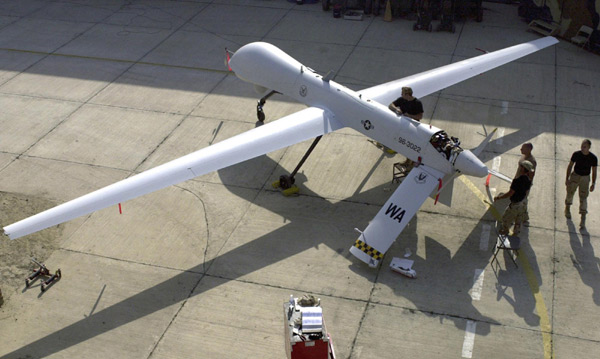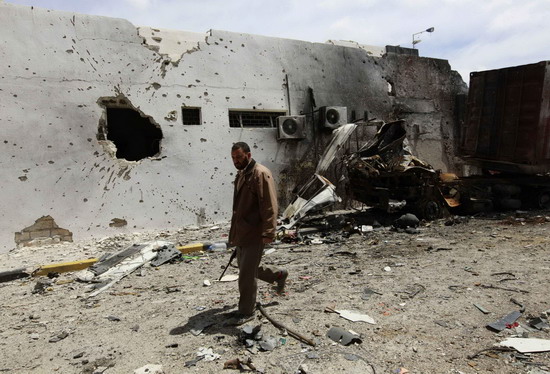Global General
US deploys armed Predator drones in Libya
(Xinhua)
Updated: 2011-04-22 09:19
 |
Large Medium Small |
|
 |
|
Members of the 11th Reconnaissance Squadron from Indian Springs, Nevada perform pre-flight checks on a Predator unmanned aerial vehicle prior to a mission in this November 9, 2001 file photo shot at an undisclosed location. The United States has started using armed drones against Muammar Gadhafi's troops. [Photo/Agencies]
|
|
|
WASHINGTON - US Defense Secretary Robert Gates on Thursday said President Barack Obama has approved the use of armed Predator drones in the military mission in Libya, and the unmanned aerial vehicles can provide unique capabilities to the NATO forces operating in the Northern African country.
|
||||
Vice Chairman of the Joint Chiefs of Staff James Cartwright, who briefed reporters together with Gates, said Predator drones' ability to get lower than regular fighter jets allows the coalition to conduct low-level precision attacks on Libyan government forces.
He said the remote-controlled drones can provide better vision of the battleground, and manage collateral damage better. Their ability for "extended persistence" in targets, which means they can fly much longer periods of time than regular planes in the sky, brings capability to the conflict that NATO partners don't have.
Predator drones and can fly surveillance missions and fire Hellfire missiles. They were used extensively in Afghanistan, but Gates said the drones used in Libya did not come from Afghanistan.
They also claimed the use of Predator drones isn't "mission creep," which means the expansion of a mission beyond its original goals.
Although the United States has handed over command of the Libyan mission to NATO, it still provides some of the most critical capabilities in the conflict, such as aerial refueling, jamming, surveillance and certain ground attack capabilities.
| 分享按钮 |



